- Home
- Graham Hancock
Fingerprints of the Gods Page 31
Fingerprints of the Gods Read online
Page 31
majority of the extinctions occurred in just two thousand years, between
11,000 BC and 9000 BC.5 To put this in perspective, during the previous
300,000 years only about twenty genera had disappeared.6
The same pattern of late and massive extinctions was repeated across
Europe and Asia. Even far-off Australia was not exempt, losing perhaps
nineteen genera of large vertebrates, not all of them mammals, in a
relatively short period of time.7
Alaska and Siberia: the sudden freeze
The northern regions of Alaska and Siberia appear to have been the worst
hit by the murderous upheavals between 13,000 and 11,000 years ago.
In a great swathe of death around the edge of the Arctic Circle the
remains of uncountable numbers of large animals have been found—
including many carcasses with the flesh still intact, and astonishing
quantities of perfectly preserved mammoth tusks. Indeed, in both
regions, mammoth carcasses have been thawed to feed to sled dogs and
mammoth steaks have featured on restaurant menus in Fairbanks.8 One
authority has commented, ‘Hundreds of thousands of individuals must
have been frozen immediately after death and remained frozen,
otherwise the meat and ivory would have spoiled ... Some powerful
general force was certainly at work to bring this catastrophe about.’9
Dr Dale Guthrie of the Institute of Arctic Biology has made an
interesting point about the sheer variety of animals that flourished in
Alaska before the eleventh millennium BC:
When learning of this exotic mixture of sabre-tooth cats, camels, horses, rhinos,
asses, deer with gigantic antlers, lions, ferrets, and saiga, one cannot help
wondering about the world in which they lived. This great diversity of species, so
different from that encountered today, raises the most obvious question: is it not
likely that the rest of the environment was also different?10
The Alaskan muck in which the remains are embedded is like a fine, darkgrey sand. Frozen solid within this mass, in the words of Professor
Hibben of the University of New Mexico:
lie the twisted parts of animals and trees intermingled with lenses of ice and layers
of peat and mosses ... Bison, horses, wolves, bears, lions ... Whole herds of
5 Ibid., pp. 360-1; The Path of the Pole, p. 250.
6 Quaternary Extinctions, p. 360-1.
7 Ibid., p. 358.
8 Donald W. Patten, The Biblical Flood and the Ice Epoch: A Study in Scientific History,
Pacific Meridian Publishing Co., Seattle, 1966, p. 194.
9 The Path of the Pole, p. 258.
10 David M. Hopkins et al., The Palaeoecology of Beringia, Academic Press, New York,
1982, p. 309.
208
Graham Hancock – FINGERPRINTS OF THE GODS
animals were apparently killed together, overcome by some common power ...
Such piles of bodies of animals or men simply do not occur by any ordinary
natural means ...’11
At various levels stone artefacts have been found ‘frozen in situ at great
depths, and in association with Ice Age fauna, which confirms that men
were contemporary with extinct animals in Alaska’.12 Throughout the
Alaskan mucks, also there is:
evidence of atmospheric disturbances of unparalleled violence. Mammoth and
bison alike were torn and twisted as though by a cosmic hand in Godly rage. In
one place we can find the foreleg and shoulder of a mammoth with portions of the
flesh and toenails and hair still clinging to the blackened bones. Close by is the
neck and skull of a bison with the vertebrae clinging together with tendons and
ligaments and the chitinous covering of the horns intact. There is no mark of knife
or cutting instrument [as there would be if human hunters, for example, had been
involved]. The animals were simply torn apart and scattered over the landscape
like things of straw and string, even though some of them weighed several tons.
Mixed with piles of bones are trees, also twisted and torn and piled in tangled
groups; and the whole is covered with a fine sifting muck, then frozen solid.13
Much the same picture emerges in Siberia where catastrophic climatic
changes and geological upheavals occurred at around the same time.
Here the frozen mammoth graveyards, ‘mined’ for their ivory since the
Roman era, were still yielding an estimated 20,000 pairs of tusks every
decade at the beginning of the twentieth century.14
Once again, some mysterious factor appears to have been at work in
bringing about these mass extinctions. With their woolly coats and thick
skins, mammoths are generally considered adapted to cold weather, and
we are not surprised to come across their remains in Siberia. Harder to
explain is the fact that human beings perished alongside them,15 as well
as many other animals that in no sense can be described as cold-adapted
species:
The northern Siberian plains supported vast numbers of rhinoceroses, antelope,
horses, bison, and other herbivorous creatures, while a variety of carnivores,
including the sabertooth cat, preyed upon them ... Like the mammoths, these
other animals ranged to the extreme north of Siberia, to the shores of the Arctic
Ocean, and yet further north to the Lyakhov and New Siberian Islands, only a very
short distance from the North Pole.16
Researchers have confirmed that of the thirty-four animal species living in
Siberia prior to the catastrophes of the eleventh millennium BC—including
Ossip’s mammoth, giant deer, cave hyena and cave lions—no less than
11 Professor Frank C. Hibben, The Lost Americans, cited in The Path of the Pole, p. 275ff.
12 F. Rainey, ‘Archaeological Investigations in Central Alaska’, American Antiquity,
volume V, 1940, page 307.
13 Path of the Pole, p. 275ff.
14 The Biblical Flood and the Ice Epoch, p. 107-8.
15 A. P. Okladnikov, ‘Excavations in the North’ in Vestiges of Ancient Cultures, Soviet
Union, 1951.
16 The Path of the Pole, p. 255.
209
Graham Hancock – FINGERPRINTS OF THE GODS
twenty-eight were adapted only to temperate conditions.17 In this context,
one of the most puzzling aspects of the extinctions, which runs quite
contrary to what today’s geographical and climatic conditions lead us to
expect, is that the farther north one goes, the more the mammoth and
other remains increase in number.18 Indeed some of the New Siberian
Islands, well within the Arctic Circle, were described by the explorers who
first discovered them as being made up almost entirely of mammoth
bones and tusks.19 The only logical conclusion, as the nineteenth-century
French zoologist Georges Cuvier put it, is that ‘this eternal frost did not
previously exist in those parts in which the animals were frozen, for they
could not have survived in such a temperature. The same instant that
these creatures were bereft of life, the country which they inhabited
became frozen.’20
There is a great deal of other evidence which suggests that a sudden
freeze took place in Siberia during the eleventh millennium BC. In his
survey of the New Siberian Islands, the Arctic explorer Baron Eduard von
Toll f
ound the remains ‘of a sabre-tooth tiger, and a fruit tree that had
been 90 feet tall when it was standing. The tree was well preserved in the
permafrost, with its roots and seeds. Green leaves and ripe fruit still
clung to its branches ... At the present time the only representative of
tree vegetation on the islands is a willow that grows one inch high’.21
Equally indicative of the cataclysmic change that took place at the onset
of the great cold in Siberia is the food the extinct animals were eating
when they perished: ‘The mammoths died suddenly, in intense cold, and
in great numbers. Death came so quickly that the swallowed vegetation is
yet undigested ... Grasses, bluebells, buttercups, tender sedges, and wild
beans have been found, yet identifiable and undeteriorated, in their
mouths and stomachs.’22
Needless to say, such flora does not grow anywhere in Siberia today. Its
presence there in the eleventh millennium BC compels us to accept that
the region had a pleasant and productive climate—one that was
temperate or even warm.23 Why the end of the last Ice Age in other parts
of the world should have been the beginning of fatal winter in this former
paradise is a question we shall postpone until Part VIII. What is certain,
17 A. P. Okladnikov, Yakutia before its Incorporation into the Russian State, McGillQueens University Press, Montreal, 1970.
18 The Path of the Pole, p. 250.
19 The Biblical Flood and the Ice Epoch, p. 107. Wragnell, the explorer, observed on Bear
Island (Medvizhi Ostrova) that the soil consisted of only sand, ice and such a quantity of
mammoth bones that they seemed to be the chief substance of the island. On the
Siberian mainland he observed that the tundra was dotted with mammoth tusks rather
than Arctic shrubbery.
20 Georges Cuvier, Revolutions and Catastrophes in the History of the Earth, 1829.
21 Cited in Path of the Pole, p. 256.
22 Ivan T. Sanderson, ‘Riddle of the Quick-Frozen Giants’, Saturday Evening Post, 16
January 1960, p. 82.
23 Path of the Pole, p. 256.
210
Graham Hancock – FINGERPRINTS OF THE GODS
however, is that at some point between 12-13,000 years ago a destroying
frost descended with horrifying speed upon Siberia and has never relaxed
its grip. In an eerie echo of the Avestic traditions, a land which had
previously enjoyed seven months of summer was converted almost
overnight into a land of ice and snow with ten months of harsh and
frozen winter.24
A thousand Krakatoas, all at once
Many of the myths of cataclysm speak of times of terrible cold, of
darkened skies, of black, burning, bituminous rain. For centuries it must
have been like that all the way across the arc of death incorporating
immense tracts of Siberia, the Yukon and Alaska. Here, ‘Interspersed in
the muck depths, and sometimes through the very piles of bones and
tusks themselves, are layers of volcanic ash. There is no doubt that
coincidental with the [extinctions] there were volcanic eruptions of
tremendous proportions.’25
There is a remarkable amount of evidence of excessive volcanism
during the decline of the Wisconsin ice cap.26 Far to the south of the
frozen Alaskan mucks, thousands of prehistoric animals and plants were
mired, all at once, in the famous La Brea tar pits of Los Angeles. Among
the creatures unearthed were bison, horses, camels, sloths, mammoths,
mastodons and at least seven hundred sabre-toothed tigers.27 A
disarticulated human skeleton was also found, completely enveloped in
bitumen, mingled with the bones of an extinct species of vulture. In
general, the La Brea remains (‘broken, mashed, contorted, and mixed in a
most heterogeneous mass’28) speak eloquently of a sudden and dreadful
volcanic cataclysm.29
Similar finds of typical late Ice Age birds and mammals have been
unearthed from asphalt at two other locations in California (Carpinteria
and McKittrick). In the San Pedro Valley, mastodon skeletons were
discovered still standing upright, ungulfed in great heaps of volcanic ash
and sand. Fossils from the glacial Lake Floristan in Colorado, and from
Oregon’s John Day Basin, were also excavated from tombs of volcanic
ash.30
Although the tremendous eruptions that created such mass graves may
have been at their most intense during the last days of the Wisconsin,
they appear to have been recurrent throughout much of the Ice Age, not
24 Ibid., p. 256. Winter temperatures fall to 56 degrees below zero.
25 Ibid., p. 277.
26 Ibid., p. 132.
27 R. S. Luss, Fossils, 1931, p. 28.
28 G. M. Price, The New Geology, 1923, p. 579.
29 Ibid.
30 Earth In Upheaval, p. 63
211
Graham Hancock – FINGERPRINTS OF THE GODS
only in North America but in Central and South America, in the North
Atlantic, in continental Asia, and in Japan.31
It is difficult to imagine what this widespread volcanism might have
meant for people living in those strange and terrible times. But those who
recall the cauliflower-shaped clouds of dust, smoke and ash ejected into
the upper atmosphere by the eruption of Mount Saint Helens in 1980 will
appreciate that a large number of such explosions (occurring sequentially
over a sustained period at different points around the globe) would not
only have had devastating local effects but would have caused a severe
deterioration in the world’s climate.
Mount Saint Helens spat out an estimated one cubic kilometre of rock
and was small-scale by comparison with the typical volcanism of the Ice
Age.32 A more representative impression would be the Indonesian volcano
Krakatoa, which erupted in 1883 with such violence that more than
36,000 people were killed and the explosion was heard 3000 miles away.
From the epicentre in the Sunda Strait, tsunamis 100 feet high roared
across the Java Sea and the Indian Ocean, carrying steamships miles
inland and causing flooding as far away as East Africa and the western
coasts of the Americas. Eighteen cubic kilometres of rock and vast
quantities of ash and dust were pumped into the upper atmosphere;
skies all over the world were noticeably darker for more than two years
and sunsets notably redder. Average global temperatures fell measurably
during this period because volcanic dust-particles reflect the sun’s rays
back into space.33
During the episodes of intense volcanism which characterized the Ice
Age, we must envisage not one but many Krakatoas. The combined effect
would at first have been a great intensification of glacial conditions, as
the light of the sun was cut by the boiling dust clouds, and as already low
temperatures plummeted even further. Volcanoes also inject enormous
volumes of carbon dioxide into the atmosphere, and carbon dioxide is a
‘greenhouse gas’, so it is reasonable to suppose, as the dust began to
settle during periods of relative calm, that a degree of global warming
would have occurred. A number of authorities attribute the repeated
advances and retreats of the great
ice sheets to precisely this see-saw
interaction between volcanism and climate.34
Global flooding
Geologists agree that by 8000 BC the great Wisconsin and Wurm ice-caps
had retreated. The Ice Age was over. However, the seven thousand years
31 Path of the Pole, p. 133, 176.
32 The Evolving Earth, Guild Publishing, London, 1989, p. 30.
33 Ice Ages: Solving the Mystery, p. 64.
34 Path of the Pole, pp. 132-5.
212
Graham Hancock – FINGERPRINTS OF THE GODS
prior to that date had witnessed climatic and geological turbulence on a
scale that was almost unimaginable. Lurching from cataclysm to disaster
and from misfortune to calamity, the few scattered tribes of surviving
humans must have led lives of constant terror and confusion: there would
have been periods of quiescence, when they might have hoped that the
worst was over. While the melting of the giant glaciers continued,
however, these episodes of tranquillity would have been punctuated
again and again by violent floods. Moreover, sections of the earth’s crust
hitherto pressed down into the asthenosphere by billions of tons of ice
would have been liberated by the thaw and begun to rise again,
sometimes rapidly, causing devastating earthquakes and filling the air
with terrible noise.
Some times were much worse than others. The bulk of the animal
extinctions took place between 11,000 BC and 9000 BC when there were
violent and unexplained fluctuations of climate.35 (In the words of
geologist John Imbrie, ‘a climatic revolution took place around 11,000
years ago.’36) There were also greatly increased rates of sedimentation37
and an abrupt temperature increase of 6-10 degrees Centigrade in the
surface waters of the Atlantic Ocean.38
Another turbulent episode, again accompanied by mass extinctions,
took place between 15,000 BC and 13,000 BC. We saw in the previous
chapter that the Tazewell Advance brought the ice sheets to their
maximum extent around 17,000 years ago and that a dramatic and
prolonged thaw then ensued, completely deglaciating millions of square
miles of North America and Europe in less than two thousand years.
There were some anomalies: all of western Alaska, the Yukon territory
in Canada, and most of Siberia including the New Siberian Islands (now

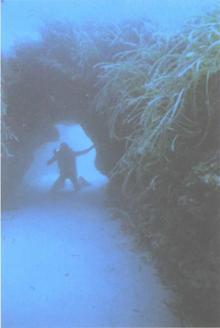 Underworld: The Mysterious Origins of Civilization
Underworld: The Mysterious Origins of Civilization The Master Game: Unmasking the Secret Rulers of the World
The Master Game: Unmasking the Secret Rulers of the World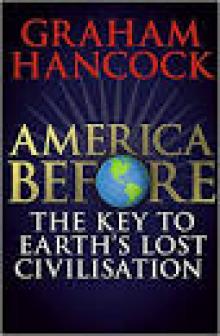 America Before
America Before Entangled
Entangled War God: Nights of the Witch
War God: Nights of the Witch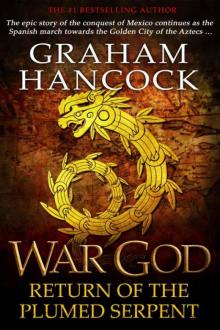 War God: Return of the Plumed Serpent
War God: Return of the Plumed Serpent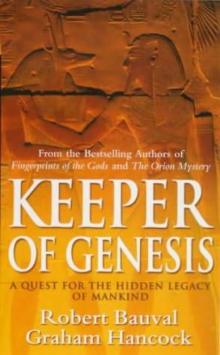 The Message of the Sphinx AKA Keeper of Genesis
The Message of the Sphinx AKA Keeper of Genesis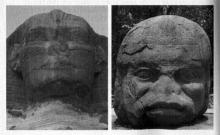 Fingerprints of the Gods
Fingerprints of the Gods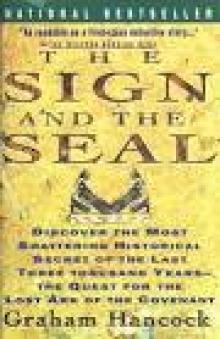 The Sign and the Seal
The Sign and the Seal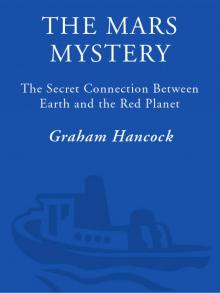 The Mars Mystery: The Secret Connection Between Earth and the Red Planet
The Mars Mystery: The Secret Connection Between Earth and the Red Planet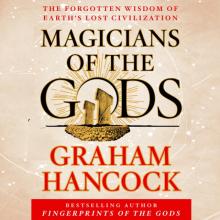 Magicians of the Gods: The Forgotten Wisdom of Earth's Lost Civilization
Magicians of the Gods: The Forgotten Wisdom of Earth's Lost Civilization War God
War God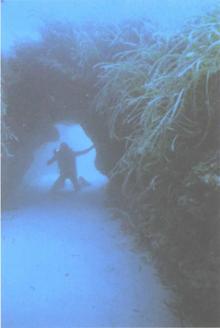 Underworld
Underworld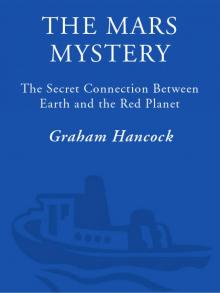 The Mars Mystery
The Mars Mystery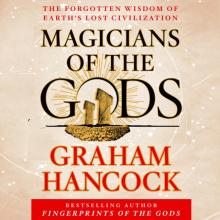 Magicians of the Gods
Magicians of the Gods The Master Game
The Master Game